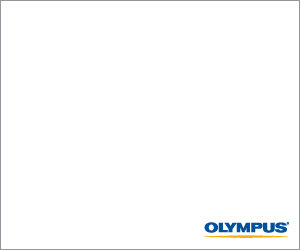|
 Digital Camera Review by: Katrina Putker Digital Camera Review by: Katrina Putker
The Ricoh CX2 is not the slimmest compact camera on the market, nor would it be the most lightweight (at 185g) but it does have some compelling design features and capabilities in its favour.
As successor to the CX1, the CX2 offers the same classy stylings and for the most part, the same, if not somewhat improved or extended feature set.
Afterall, it was less than six months in between the release of the two models so one must wonder how much genuine advance there truly could have been in that time frame.
Having said that, the optical zoom has jumped from 7.1x to an impressive 10.7x, the frame rate increased from four to a speedy five frames per second, three new scene modes are introduced (miniaturise, discreet and high contrast B&W) and continuous and pre-AF modes included.
Miniaturise mode is a quirky feature users are likely to enjoy, especially those familiar with the look created by tilt-shift lenses. As the name suggests, the feature makes everything in the scene seem as though it is shrunken or taken directly from a model display, especially when used on outdoor scenes and landscapes.
High contrast black and white has its place for the experimental shooter but doesn’t truly replicate the look of high-speed black and white film as it claims to do. Although heavy contrast is the look it’s going for, too often information in both the highlights and shadow areas is lost where the detail of which, would have furthered the success of the image.
Discreet mode is a nice idea that switches on the CX2’s manners by disabling the flash, AF lamp and all operational noises for discreet shooting in places such as museums and churches etc. While great in theory, a distinct whirring noise (described further below) can still be heard and in reality, is far from discreet.
The CX2 retains the same 9 megapixel CMOS sensor and 3 inch 920,000 dot LCD, which displays quite well in a variety of lighting conditions including bright sunlight where many compacts often struggle.
Similarly to the CX1, the CX2 does suffer an obvious degree of noise, especially when shooting at anything above ISO 400.
If you tend not to enlarge or crop into your images for printing or generally display them at smaller sizes on the web, then higher ISOs of 800-1600 will suffice but the moment you enlarge or zoom into them, significant noise and the resulting high level of graininess will be noticed.
Fortunately, lower-end ISOs of 80-100 offer much better results and where possible, should be the preferred option. Considering however, that the CX2’s maximum aperture is a relatively slow F3.5, this may not always be a possibility.
As with all Ricoh units currently reviewed at Buy-n-Shoot, the CX2 makes an unsettling and noticeable static-sounding whirr when the shutter has been semi-depressed and the unit is focused on the subject.
While it’s not a major issue by any stretch, it is one that perhaps Ricoh should look at correcting in future models.
On the up side however, the focusing process itself is generally quite swift on the CX2, easily and repeatedly locking onto areas of a composition in under a second.
Where it can struggle however is at full 10.7x optical zoom (300mm equivalent) where, from time to time, the CX2 sends focus in and out and in and out again without ever locking on.
In this case the red ‘no focus’ warning flashes on screen but occasionally, the green ‘correct focus’ window/s will appear when it is evident via the preview offered that the current composition is not remotely in focus.
Having said that, it is more than worth persisting with, remembering that it is not all but few cases where there may be an initial issue.
Results at full 10.7x optical zoom are quite impressive overall with sharpness remaining in tact in the centre of the image although it does taper off slightly towards the edges.
The CX2’s built-in flash seems to carry fairly well too and expose subjects within reach quite evenly helping to maintain the level of sharpness discussed.
When shooting at full zoom, hand-held without flash however, it proves difficult to achieve static results as it does with most compacts offering such a generous optical zoom range.
General handling and control of the CX2 is quite comfortable and natural with all of the appropriate buttons and dials etc. in the expected locations.
There is a nicely textured panel on the front of the unit where the supporting fingers rest that while gritty to the touch isn’t as grippy as a rubber-based material would have been.
There is a small rubber patch provided as the thumb rest on the CX2’s back, which, although not as pretty as the texturised metal front, would possibly have proven more practical.
The eight options on the mode dial include: easy shooting, continuous, dynamic range double shot, scene, movie, auto and two customisable ‘my settings’ modes.
The dynamic range mode has improved slightly from the CX1, seeming to pull back detail in the highlights with greater success although the overall effect seems to reduce blacks some two or three shades so the resulting images are a little less punchy.
Alternatively, generally speaking the CX2 produces images that are well saturated, possibly too much so for some personal preferences and colours reproduce fairly well overall.
At the end of the day, there’s no need to feel duped if you recently purchased a Ricoh CX1 because the new CX2 model, while slightly tweaked, is not a drastic advancement.
In saying that, the solid performance of the CX1 has certainly been continued and users can be assured that this line of compacts will perform well overall, especially given some initial practice and familiarisation time.
| Appearance rating |
4 stars |
| Functionality rating |
3.5 stars |
Image quality
|
4 stars |
Lens quality
|
4 stars |
| View finder / LCD screen |
3.5 stars |
| Value for money |
4 stars |
| RRP (AUD) |
$599 |
 |
|
| Effective Pixels |
9.29 Million mega pixels |
| Image Sizes |
9 Sizes |
| Lens - zoom wide [mm] |
28mm (35mm equivalent ) |
| Lens -zoom tele [mm] |
300mm (35mm equivalent ) |
| Lens - Optical Zoom |
Yes, 10x |
| Resolution Settings |
From 640 x 480 to 3,456 x 2,592
|
| Shooting Modes |
17 Scene options |
| Face Detection |
No |
| Manual Focus |
No |
| Auto Focus |
Yes |
| Focus Range [cm] |
28cm - infinity |
| Aperture Range |
F3.5 (Wide) - F5.6 (Telephoto) |
| Aperture Priority |
Yes |
| Macro |
No |
| Macro Range [cm] |
- |
| Shutter Speeds |
Auto, 8, 4, 2, 1 - 1/2000 sec.
|
| Shutter Priority |
No |
| ISO |
AUTO, AUTO-HI, ISO80 / ISO100 / ISO200 / ISO400 / ISO800 / ISO1600 |
| LCD Monitor |
3.0-inch Transparent LCD (approx. 920,000 dots) |
| Viewfinder |
No |
| Flash |
Auto (during low light and when the subject is backlit), Red-eye-Reduction, Flash On, Slow Synchro, Flash Off |
| Hot Shoe |
No |
| White balance |
AUTO / Multi-Pattern AUTO / Outdoors / Cloudy / Incandescent / Incandescent 2 / Fluorescent / Manual, White Balance Bracket Function |
| Self Timer |
Yes, 10sec. and 2sec |
| Movie Options |
Yes. Limited only by memory card size. |
| Video Out |
Yes |
| Storage Type |
SD memory card |
| Storage Included [Mb] |
88MB Internal Memory |
| Image / Audio Formats |
JPEG, AVI, CIPA and DPOF |
| Connectivity |
USB 2.0 High-speed |
| Power Source |
AC adapter (AC-4g option) |
| Battery Options |
DB-70 battery |
| Dimensions |
101.5 mm (W) x 58.3 mm (H) x 29.4 mm (D) |
| Weight |
Approx. 185 g (excluding battery, SD memory card, strap) |
|









